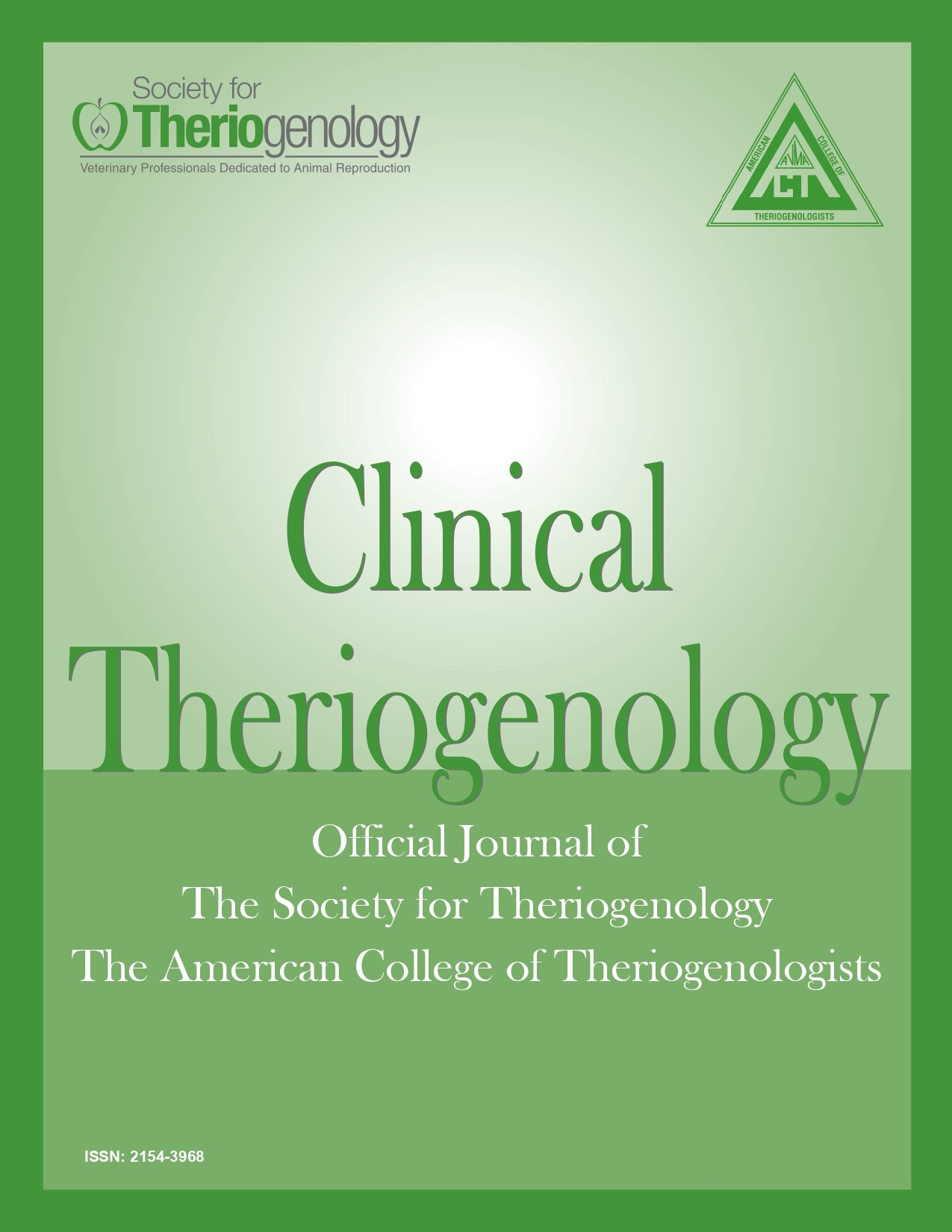Idiopathic infertility in a Friesian stallion
Abstract
A 7 year old Friesian stallion was presented for breeding soundness examination after failing to establish pregnancy in multiple Warmblood mares. His breeding history included multiple unsuccessful breeding attempts over 2 consecutive breeding seasons using fresh, cooled, and frozen thawed semen with appropriate management. Physical examination findings were unremarkable. A breeding soundness examination was performed. In first collection, semen volume was 105 ml with a concentration of 73 million/ml. Progressive motility was 70% with 5.4 x 109 progressively motile sperm (PMS). In second collection, ejaculate volume was 75 ml with 50% progressive motility, a concentration of 44 million/ml and a total of 1.6 x 109 PMS. Predicted daily sperm output was 3.9 x 109. A semen sample was sent to Texas A&M for a sperm chromatin structure assay (SCSA) and acrosome reaction assay. Total and progressive motility after a 24 hour cool test were 33 and 47% respectively, after centrifugation and morphology consisted of 54% normal sperm. SCSA results revealed no increase in sperm DNA fragmentation, but sperm had substantially decreased acrosomal reaction activation. Karyotyping and genotyping were performed and revealed a normal SRY gene and a nonsusceptibility genotype at FKBP6 locus. Owners elected for castration. Histology of both testes demonstrated mild inflammation and degenerative changes, but these changes were not severe enough to explain infertility. Presumptive reason for reduced fertility was impaired acrosomal reaction (IAR), a well established cause of male subfertility in humans and animals. A recent study identified FKBP6 as a candidate susceptibility gene for IAR1 leaving the mechanism of impaired acrosomal reaction unknown. Friesian breed has a high inbreeding coefficient and is genetically predisposed to multiple conditions such as dwarfism, immune mediated disorders, megaesophagus, aortic rupture and orthopedic disorders.2,3 This case has potential implications for another genetic cause for infertility, such as locus other than FKBP6.
Downloads

This work is licensed under a Creative Commons Attribution-NonCommercial 4.0 International License.
Authors retain copyright of their work, with first publication rights granted to Clinical Theriogenology. Read more about copyright and licensing here.





